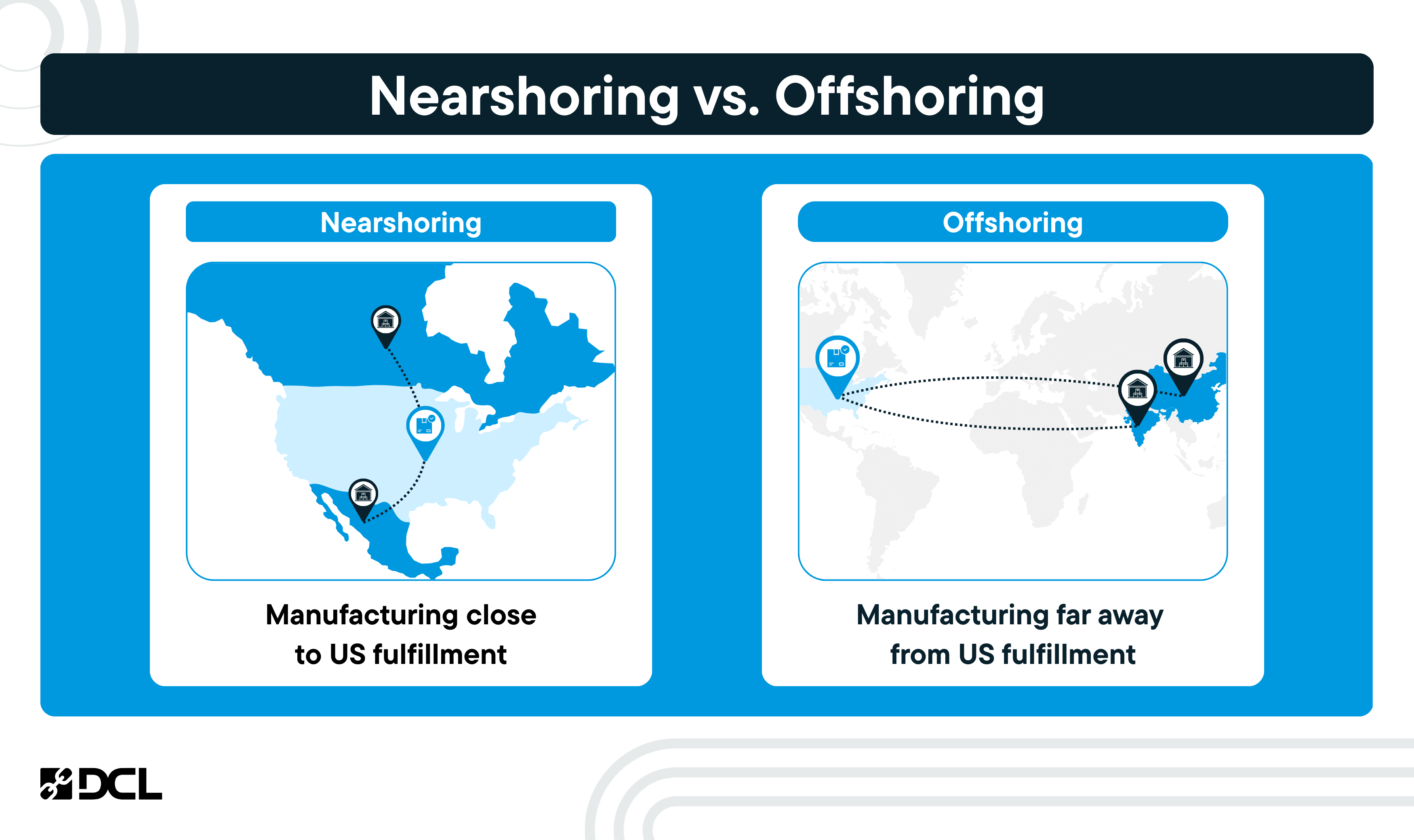
Nearshoring is rapidly becoming a go-to strategy for companies looking to streamline operations, reduce costs, and improve collaboration by outsourcing work to nearby countries rather than distant locations. If you’ve ever wondered why so many businesses are talking about nearshoring, or how it stacks up against offshoring and onshoring, you’re in the right place. Let’s break down what nearshoring means, why it’s gaining momentum, and how it can transform business operations-especially for US companies.
What is Nearshoring?
Nearshoring is a form of outsourcing where a company moves certain business operations-like manufacturing, software development, or customer service-to a nearby country, typically within the same continent or region. For example, a US company might choose to partner with teams in Mexico or Canada rather than India or China. The key difference from offshoring is geographic proximity, which brings a host of unique benefits.

Why Companies Choose Nearshoring
The appeal of nearshoring lies in its ability to bridge the gap between traditional offshoring and keeping everything in-house. By working with partners in nearby countries, businesses can enjoy many of the cost savings associated with outsourcing, while minimizing some of the common headaches of offshoring, such as major time zone differences and cultural barriers.
Nearshoring vs. Offshoring vs. Onshoring
Understanding the differences between nearshoring, offshoring, and onshoring helps clarify why many companies are shifting toward nearshoring. Here’s a breakdown of each model:
Nearshoring:
- Outsourcing business operations to nearby countries, such as Mexico or Canada.
- Minimal time zone differences enable real-time communication and collaboration.
- Offers cost-effective solutions with lower labor costs compared to onshoring.
- Benefits from cultural similarities and fewer language barriers.
- Easier to manage quality control and maintain oversight due to geographic proximity.
- Often supported by favorable trade agreements reducing tariffs and transportation costs.
Offshoring:
- Outsourcing to distant countries, like India or China.
- Typically involves significant time zone differences, making real-time collaboration challenging.
- Provides access to a large talent pool with very low labor costs.
- May face language barriers and cultural differences that complicate communication.
- Can involve higher transportation costs and longer transit times for goods.
- Greater risk of disruptions due to geopolitical or logistical issues.
Onshoring:
- Keeping business operations within the home country.
- No time zone or language barriers, ensuring maximum control and ease of communication.
- Usually involves higher labor costs compared to nearshoring or offshoring.
- Smaller talent pool may limit scalability or access to specialized skills.
- Simplifies compliance with local regulations and protects intellectual property more directly.
- Often preferred for sensitive or highly specialized operations requiring close oversight.
This comparison highlights how nearshoring combines many of the advantages of both offshoring and onshoring, making it an increasingly attractive outsourcing model.

The Benefits of Nearshoring
Let’s dive deeper into the benefits of nearshoring and why so many companies are making the switch.
Cost Savings
One of the main drivers for nearshoring is cost savings. Labor costs in nearby countries like Mexico are typically much lower than in the US, but without the hidden expenses that can come with offshoring, such as long-distance travel, higher shipping fees, and costly communication tools. Companies can also benefit from favorable trade agreements-like the USMCA between the US, Mexico, and Canada-which reduce tariffs and make cross-border business more cost-effective.
Shorter Supply Chains and Faster Shipping
Geographic proximity means shorter supply chains. This leads to faster shipping, lower transportation costs, and fewer disruptions due to global events or logistical hiccups. For industries like automotive or manufacturing, being able to quickly move goods across borders is a huge advantage.
Improved Communication and Real-Time Collaboration
With similar time zones, teams can work together in real time. This is especially important for project management, software development, and any operation that requires frequent check-ins or quick problem-solving. Nearshoring makes it easier to build strong relationships with your partners, leading to better quality control and more effective oversight.
Access to a Skilled Workforce
Many nearshore locations boast a highly skilled labor force. For US companies, Mexico and Canada offer large pools of talent in fields like engineering, software development, and customer service. Countries in Latin America are also popular nearshoring destinations thanks to their strong education systems and growing tech sectors.
Cultural Similarities and Fewer Language Barriers
Working with nearby countries often means fewer cultural differences and language barriers. Shared business customs and similar work ethics make it easier to collaborate, avoid misunderstandings, and build cohesive teams.
Flexibility and Agility
Nearshoring allows businesses to scale operations up or down quickly. The ease of travel and communication makes it possible to adapt to changing market conditions without the delays that can come with offshoring. This agility is crucial in fast-paced industries.
Enhanced Control and Oversight
Being able to visit your nearshoring partner regularly means you can keep a close eye on quality control, address issues promptly, and build stronger relationships. This hands-on approach is much harder to achieve with distant offshore partners.
Regulatory and Legal Alignment
Neighboring countries often share similar regulatory standards and business practices, making compliance simpler and reducing legal risks. For US companies, working with Mexico or Canada can mean fewer surprises when it comes to labor laws, intellectual property, and other legal matters.
Nearshoring and Tariffs
The relationship between nearshoring and tariffs has evolved dramatically in 2025, reshaping how companies approach their supply chain strategies. Traditionally, nearshoring-moving production or sourcing closer to home, such as from Asia to Mexico or Canada-was seen as a way to sidestep high tariffs, reduce shipping times, and gain better control over operations. However, recent policy changes have complicated this picture.
In 2025, the U.S. government introduced a new wave of tariffs targeting a broad range of imports, including those from Mexico and Canada. For example, a 25% tariff was imposed on many goods from these neighboring countries, including automotive components, electronics, and industrial materials. These measures were designed to encourage domestic production, protect key industries, and address trade imbalances, but they have also introduced significant uncertainty for businesses relying on nearshoring
While nearshoring once offered a clear path to avoid tariffs on goods from Asia, companies now face the risk that their new nearshore locations may also become subject to sudden tariff hikes. This was evident when U.S. policymakers, after years of encouraging supply chain moves to Mexico, abruptly imposed steep tariffs on Mexican imports. As a result, businesses that had invested heavily in nearshoring found themselves absorbing higher labor costs and new tariff penalties, negating much of the anticipated cost savings.
The Role of Time Zones
One of the biggest advantages of nearshoring is the overlap in time zones. When your nearshore team is working in a similar time zone, real-time collaboration becomes much easier. Daily meetings, quick feedback loops, and agile project management are all possible without the late-night or early-morning calls that often come with offshoring. This is especially valuable in fields like software development, where rapid communication and quick turnarounds are critical.
Nearshoring in Action: Popular Destinations
Mexico
Mexico is a nearshoring powerhouse for US companies. Its geographic proximity, lower labor costs, and strong manufacturing base make it a top choice for industries like automotive, aerospace, and electronics. The USMCA agreement further streamlines trade and reduces tariffs, making cross-border business smoother and more cost-effective.
Canada
Canada is another popular nearshoring destination, especially for US businesses looking for high-quality talent and minimal language barriers. The shared border, similar time zones, and cultural alignment make Canada an attractive option for everything from software development to business process outsourcing.
Costa Rica and Latin America
Costa Rica and other Latin American countries are gaining traction as nearshore locations, particularly for software development and customer service. These countries offer skilled labor, competitive costs, and growing tech ecosystems, making them ideal for companies seeking to optimize their supply chain and tap into new talent pools.
Nearshoring and the Supply Chain
The global pandemic and recent geopolitical disruptions have exposed the vulnerabilities of long, complex supply chains. Nearshoring helps companies mitigate supply chain risks by bringing production and services closer to home. Shorter transit times, simplified logistics, and reduced exposure to international disruptions make nearshoring a smart strategy for building more resilient supply chains.
By working with nearshore partners, companies can also optimize inventory management, reduce carrying costs, and respond more quickly to shifts in demand. This is especially valuable for industries that rely on just-in-time delivery or need to pivot quickly in response to market changes.
Choosing the Right Nearshoring Partner
Selecting the right nearshoring partner is critical to success. It’s important to consider factors like the partner’s expertise, cultural compatibility, language skills, and track record in your industry. Look for partners who understand your business goals and can offer the flexibility, quality control, and real-time collaboration you need.
Building a strong relationship with your nearshore team is just as important as the initial selection. Regular communication, clear expectations, and mutual trust are key to getting the most out of your nearshoring strategy.
Nearshoring for Software Development
Software development is one of the most common areas for nearshoring. With the rise of agile methodologies and the need for real-time collaboration, having your development team in a similar time zone is a huge advantage. Nearshoring allows companies to tap into global talent pools while maintaining the speed and flexibility needed to stay competitive.
Many US companies are turning to Mexico, Canada, and Latin America for software development outsourcing. These regions offer skilled developers, competitive rates, and the ability to work closely with in-house teams for seamless project management.
Nearshoring and Business Process Outsourcing
Beyond manufacturing and tech, nearshoring is also popular for business process outsourcing (BPO). Functions like customer service, bookkeeping, data entry, and marketing can all be nearshored to nearby countries to increase efficiency and reduce costs. This approach allows companies to focus on core business operations while leveraging the expertise and cost efficiencies of their nearshore partners
Addressing Potential Challenges
While nearshoring offers many advantages, it’s not without its challenges. Language barriers, cultural differences, and geopolitical risks can still arise, even with nearby countries. It’s important to invest in cross-cultural training, clear communication protocols, and strong legal agreements to minimize these risks.
Additionally, not all business functions are equally suited to nearshoring. Some highly specialized or sensitive operations may still be best kept in-house or onshore, especially when intellectual property or strict regulatory compliance is involved.
Bottom Line: Why Nearshoring Makes Sense
Nearshoring is more than just a trend – it’s a practical, cost-effective way for companies to optimize their operations, build more resilient supply chains, and tap into new talent pools. By working with partners in nearby countries, businesses can enjoy cost savings, real-time collaboration, and improved quality control, all while minimizing the challenges associated with offshoring.
Whether you’re a US company looking to expand into Mexico or Canada, or a European business exploring options in Eastern Europe, nearshoring offers a flexible, scalable solution. With the right nearshoring strategy and partner, you can streamline your operations, boost efficiency, and stay ahead of the competition.





